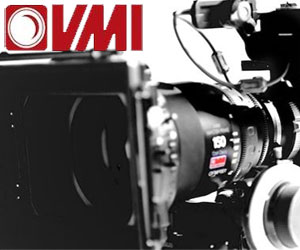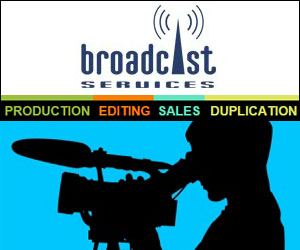Broadcast News
23/01/2017
Getting The Most Out Of Fibre

Thanks to its ability to transport broadcast signals quickly and smoothly over very long distances – much longer than copper – fibre has become as much a part of the broadcast landscape as cameras and microphones, says Paul McCann, Managing Director, Bluebell Opticom. So how can we make the most of this resource? Read on to find out.
Building an Efficient Fibre Infrastructure
System designers need to create all manner of fibre connections and topographies. Bluebell Opticom offers a standard series of cards that serve as the building blocks for scalable networks of any size and degree of complexity. All of the cards do similar jobs, but they have varying degrees of flexibility. By adding components such as switches, splitters, and distribution amplifiers, system designers can create different topographies that change the size and capabilities of the network.
At the same time, swappable SFP modules provide a relatively inexpensive, universal way to make the card serve whatever function is needed in a given situation. You can adapt the functionality of the unit to suit different applications simply by switching to a different SFP converter module.
For example, Bluebell's BC Series cards are compact, rack-mountable multiformat converters for use with a wide range of broadcast video and audio signals. They can perform an array of functions, from distribution and format conversion to monitoring and wavelength management (including CWDM). Such a wide range of functionality makes each card both a toolkit for systems engineers and a high-quality converter for any fixed installation.
Solving the Power Conundrum
While Bluebell's modular multiformat interfacing lets you mix and match components to create a versatile infrastructure, Shax products solve the power/distance problem that arises in outside broadcast situations, where CCUs reside in a distant OB truck or a cross-town control room, far away from the cameras. In that scenario, the challenge is how to get power to the camera over an expanse of, potentially, kilometres.
The common SMPTE hybrid cable has two single-mode fibres inside that send video, audio, data, and intercom signals to and from the camera. What makes a SMPTE hybrid cable “hybrid” are the copper conductors that provide power to the camera. The small diameter of these conductors becomes the limiting factor in how far the cameras can be located from their CCUs.
Bluebell's Shax products allow broadcasters to extend cameras up to 10 kilometres from the CCU by taking the hybrid cable out of the equation. Instead the Shax setup uses two fibres to carry signals between the camera and the CCU, while the camera is powered locally. And if powering the camera locally is difficult, Bluebell offers the ShaxX, a unit with a built-in camera power supply.
ShaxX lets production teams put the camera where they want it, regardless of where the power is located. A variation is the ShaxX-DUAL, which supports two broadcast cameras on four monomode fibres, with the DUAL unit providing power for both cameras.
When you combine the Multi Format SFP Interfaces with the ShaxX or ShaxX-DUAL, you can support up to 16 camera systems on just two fibre strands.
It's just one of the many ways broadcasters can use Bluebell products to create efficient fibre infrastructures that maximize the benefits of fibre.
www.bluebell.tv
This article is also available to read at BFV online here, page 37.
(JP/LM)
Building an Efficient Fibre Infrastructure
System designers need to create all manner of fibre connections and topographies. Bluebell Opticom offers a standard series of cards that serve as the building blocks for scalable networks of any size and degree of complexity. All of the cards do similar jobs, but they have varying degrees of flexibility. By adding components such as switches, splitters, and distribution amplifiers, system designers can create different topographies that change the size and capabilities of the network.
At the same time, swappable SFP modules provide a relatively inexpensive, universal way to make the card serve whatever function is needed in a given situation. You can adapt the functionality of the unit to suit different applications simply by switching to a different SFP converter module.
For example, Bluebell's BC Series cards are compact, rack-mountable multiformat converters for use with a wide range of broadcast video and audio signals. They can perform an array of functions, from distribution and format conversion to monitoring and wavelength management (including CWDM). Such a wide range of functionality makes each card both a toolkit for systems engineers and a high-quality converter for any fixed installation.
Solving the Power Conundrum
While Bluebell's modular multiformat interfacing lets you mix and match components to create a versatile infrastructure, Shax products solve the power/distance problem that arises in outside broadcast situations, where CCUs reside in a distant OB truck or a cross-town control room, far away from the cameras. In that scenario, the challenge is how to get power to the camera over an expanse of, potentially, kilometres.
The common SMPTE hybrid cable has two single-mode fibres inside that send video, audio, data, and intercom signals to and from the camera. What makes a SMPTE hybrid cable “hybrid” are the copper conductors that provide power to the camera. The small diameter of these conductors becomes the limiting factor in how far the cameras can be located from their CCUs.
Bluebell's Shax products allow broadcasters to extend cameras up to 10 kilometres from the CCU by taking the hybrid cable out of the equation. Instead the Shax setup uses two fibres to carry signals between the camera and the CCU, while the camera is powered locally. And if powering the camera locally is difficult, Bluebell offers the ShaxX, a unit with a built-in camera power supply.
ShaxX lets production teams put the camera where they want it, regardless of where the power is located. A variation is the ShaxX-DUAL, which supports two broadcast cameras on four monomode fibres, with the DUAL unit providing power for both cameras.
When you combine the Multi Format SFP Interfaces with the ShaxX or ShaxX-DUAL, you can support up to 16 camera systems on just two fibre strands.
It's just one of the many ways broadcasters can use Bluebell products to create efficient fibre infrastructures that maximize the benefits of fibre.
www.bluebell.tv
This article is also available to read at BFV online here, page 37.
(JP/LM)
More Broadcast Equipment Stories
29/03/2019
360 Video Equipment
TX uses the widest possible range of 360 Degree Video Camera Systems to allow users to choose the perfect camera for their application, even in the ha
360 Video Equipment
TX uses the widest possible range of 360 Degree Video Camera Systems to allow users to choose the perfect camera for their application, even in the ha
11/06/2018
BFV's Big Interview: Finepoint Broadcast
Broadcast Film & Video exclusively talks to Giles Bendig, the Managing Director of Finepoint Broadcast. The firm has been supplying broadcasters with
BFV's Big Interview: Finepoint Broadcast
Broadcast Film & Video exclusively talks to Giles Bendig, the Managing Director of Finepoint Broadcast. The firm has been supplying broadcasters with
27/02/2018
BFV's Big Interview: TSL Products
For more than 30 years, TSL Products has worked directly with the world's leading broadcasters and content creators to design, manufacture and market
BFV's Big Interview: TSL Products
For more than 30 years, TSL Products has worked directly with the world's leading broadcasters and content creators to design, manufacture and market
14/12/2017
Camera Automation For Sky Sports' PDC Darts Championships Coverage
MRMC has been providing robotic systems for Sky Sports' coverage of the PDC darts championships for three years. Between the 2013 2016 seasons, the ro
Camera Automation For Sky Sports' PDC Darts Championships Coverage
MRMC has been providing robotic systems for Sky Sports' coverage of the PDC darts championships for three years. Between the 2013 2016 seasons, the ro
16/06/2017
BFV's Big Interview: Vortex
Based in Ealing, London, Vortex Communications has been delivering cost-effective solutions to broadcast and professional AV users since 1987. This mo
BFV's Big Interview: Vortex
Based in Ealing, London, Vortex Communications has been delivering cost-effective solutions to broadcast and professional AV users since 1987. This mo
14/06/2017
Tally Technologies Introduce TallyTec Pro
Tally Technologies has introduced the TallyTec Pro – a tally light and timecode transmission system designed for the professional live production mark
Tally Technologies Introduce TallyTec Pro
Tally Technologies has introduced the TallyTec Pro – a tally light and timecode transmission system designed for the professional live production mark
23/01/2017
Getting The Most Out Of Fibre
Thanks to its ability to transport broadcast signals quickly and smoothly over very long distances – much longer than copper – fibre has become as muc
Getting The Most Out Of Fibre
Thanks to its ability to transport broadcast signals quickly and smoothly over very long distances – much longer than copper – fibre has become as muc
20/01/2017
AJA Ships ROI-SDI Scan Converter
AJA Video Systems has started shipping its ROI-SDI scan converter. Bringing Region-of-Interest (ROI) controls for professional SDI sources into a port
AJA Ships ROI-SDI Scan Converter
AJA Video Systems has started shipping its ROI-SDI scan converter. Bringing Region-of-Interest (ROI) controls for professional SDI sources into a port
16/01/2017
Hamlet And Good To Go!
Hamlet had a successful 2016 with a great response to its latest modular matrix switch range launched at IBC. The Hamlet portables for base band and s
Hamlet And Good To Go!
Hamlet had a successful 2016 with a great response to its latest modular matrix switch range launched at IBC. The Hamlet portables for base band and s
16/01/2017
How To Use Autocue Effectively
Autocue, teleprompting, prompting. Rarely the first service on the production managers list, and yet, it's a piece of equipment which when paired with
How To Use Autocue Effectively
Autocue, teleprompting, prompting. Rarely the first service on the production managers list, and yet, it's a piece of equipment which when paired with















